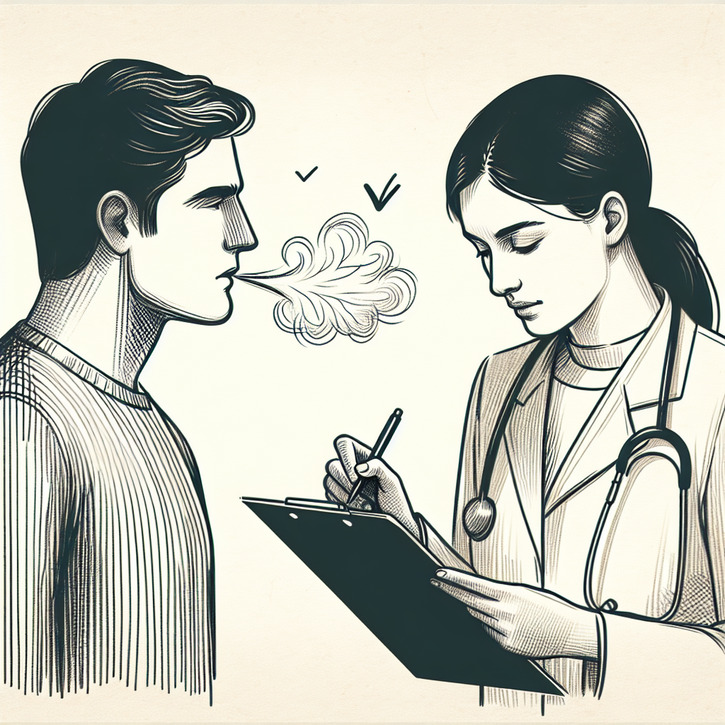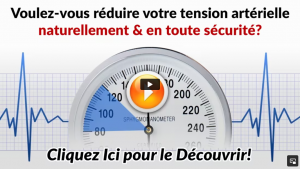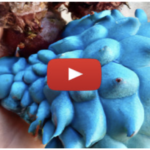The #1 Rated Blood Sugar Formula
Medical Insight: Identifying the Signs of Pulmonary Hypertension

Medical Insight: Identifying the Signs of Pulmonary Hypertension
Understanding Pulmonary Hypertension: An Overview
Pulmonary hypertension (PH) is a serious medical condition where the blood pressure in the pulmonary arteries becomes too high. These arteries carry oxygen-rich blood from your heart to your lungs, and when they get narrowed or blocked, your heart has to work overtime to pump blood through them – which can lead to some pretty serious complications down the line.
What is Pulmonary Hypertension?
Put simply, pulmonary hypertension happens when the pressure in those pulmonary arteries goes above what's considered normal. This makes it tougher for your heart to efficiently pump blood through your lungs – and over time, this extra strain can lead to right-sided heart failure and other major health issues.
The Importance of Early Detection
Spotting pulmonary hypertension early is crucial. The symptoms often creep up slowly, which means it's easy to brush them off or mistake them for something less serious. But here’s the thing – catching these signs early can make a huge difference in how well you manage the condition and your overall quality of life.
Common Risk Factors for Pulmonary Hypertension
A few things can raise your chances of developing pulmonary hypertension. Think of it like this – certain health issues act as red flags:
- Lung diseases like COPD or interstitial lung disease.
- Heart conditions, such as congenital heart defects or left-sided heart failure.
- Autoimmune disorders like scleroderma and lupus.
- Blood clots in the lungs or chronic blood clot formation (thromboembolic pulmonary hypertension).
- Certain genetic mutations linked to PH.
Recognizing the Signs of Pulmonary Hypertension: Early Warning Symptoms
Shortness of Breath (Dyspnea)
Feeling out of breath is one of the most common signs. At first, it might only happen when you’re active – but as things progress, you could find yourself struggling to catch your breath even when you're just sitting still. This happens because your heart isn't getting enough oxygenated blood through your lungs.
Fatigue and Reduced Energy Levels
Feeling unusually tired or run down is another big one. This fatigue isn’t just from exertion – it can stick around even when you’ve barely lifted a finger. Your body’s reduced ability to deliver oxygen efficiently leaves you feeling wiped out, making everyday tasks feel like a major challenge.
Chest Pain or Pressure
A squeezing or tightness in your chest is another warning sign. This discomfort might get worse when you’re active or when lying flat – and it’s all because of the increased workload on your heart and reduced blood flow.
Swelling in the Legs, Ankles, or Abdomen (Edema)
If you notice swelling, especially in your legs, ankles, or abdomen, that could be a sign. This happens due to fluid retention caused by poor blood circulation and heart function – and it can even lead to weight gain and bloating.
The Subtle Signs of Pulmonary Hypertension You Should Not Ignore
Persistent Cough or Wheezing
A lingering cough or wheezing could be an early indicator. This is often due to fluid buildup in the lungs or increased pressure on the airways – and the cough might even produce phlegm that gets worse when you lie down.
Dizziness or Fainting Spells (Syncope)
Feeling lightheaded or fainting is another sign your body’s not getting enough oxygenated blood to the brain. This can happen during physical activity, when standing up quickly, or even at rest in more severe cases – and it’s a symptom that needs immediate attention.
Bluish Lips or Skin (Cyanosis)
If your lips, skin, or nails take on a bluish tint, that’s a clear sign something’s wrong. Cyanosis means your body isn’t getting enough oxygen – and it’s a signal that pulmonary hypertension could be present.
Rapid Heartbeat or Palpitations
A racing heart or palpitations can be your body’s response to the increased demand on your heart due to PH. Your heart might beat faster or irregularly as it tries to compensate for reduced blood flow and pressure.
Understanding the Complications: What Happens If Pulmonary Hypertension Goes Untreated?
Right-Sided Heart Failure (Cor Pulmonale)
If left untreated, PH can lead to right-sided heart failure. The strain on your heart causes it to enlarge and weaken – eventually failing to pump blood effectively. This is a life-threatening complication that needs immediate action.
Blood Clots and Thromboembolic Events
Pulmonary hypertension also raises the risk of blood clots in your lungs. These clots can block blood flow, leading to complications like pulmonary embolism – a medical emergency you’ll want to avoid at all costs.
Reduced Quality of Life and Limited Mobility
As PH progresses, it starts to take a toll on your daily life. Shortness of breath, fatigue, and other symptoms can limit how active you are – making even simple tasks feel impossible. This leads to a decreased quality of life and increased dependence on others.
The Signs of Pulmonary Hypertension in Different Populations
Women and Pulmonary Hypertension: Unique Symptoms to Watch For
Women are more likely to develop certain types of PH, like idiopathic pulmonary arterial hypertension (IPAH). They might experience symptoms like chest pain, dizziness, and fatigue differently – so it’s especially important for women to be on the lookout, especially if there's a family history.
Pulmonary Hypertension in Children: Recognizing Early Signs
In kids, PH might show up differently than in adults. Keep an eye out for rapid breathing, trouble feeding, failure to thrive, and bluish skin (cyanosis). Parents need to be vigilant – early detection is key for effective treatment.
Older Adults: Age-Related Symptoms That May Mask PH
In older adults, symptoms might be mistaken for age-related changes or other chronic conditions. Fatigue, shortness of breath, and dizziness could easily be chalked up to aging or comorbidities like heart disease or COPD – which is why regular monitoring and medical evaluations are so important.
Diagnosing Pulmonary Hypertension: Tests and Procedures
Medical History and Physical Examination
The first step in diagnosing PH is a thorough medical history and physical exam. The doctor will look into your symptoms, review medications, and check for signs like cyanosis or edema.
Imaging Techniques (Echocardiogram, Chest X-Ray)
Imaging tests such as echocardiograms and chest X-rays give critical insights into heart structure and function. An echocardiogram can measure pulmonary artery pressure and spot any right-sided heart enlargement.
Blood Tests and Right Heart Catheterization
Blood tests help identify underlying causes of PH, like infections or autoimmune disorders. Right heart catheterization is the gold standard for diagnosing PH since it directly measures pressure in the pulmonary arteries.
Managing the Signs of Pulmonary Hypertension: Treatment Options and Lifestyle Changes
Medications for Pulmonary Hypertension
Several medications are used to treat PH, including:
- Prostacyclins: Help relax and open up the pulmonary arteries.
- <strong#Endothelin receptor antagonists: Prevent narrowing of the blood vessels.
- Sildenafil and tadalafil: Improve blood flow by relaxing blood vessel walls.
Oxygen Therapy and Supportive Care
Oxygen therapy is often prescribed for those with low oxygen levels in the blood. It helps ease symptoms like shortness of breath and cyanosis. Supportive care might also include pulmonary rehabilitation programs to improve breathing and physical endurance.
Lifestyle Modifications to Improve Symptoms
Making healthy lifestyle changes can make a big difference in managing symptoms and improving overall well-being. Here are some recommendations:
- Eat a balanced diet rich in fruits, vegetables, lean proteins, and whole grains.
- Engage in moderate exercise, like walking or swimming, under medical supervision.
- Avoid smoking and exposure to secondhand smoke.
- Manage stress through relaxation techniques such as meditation or deep breathing exercises.
The Role of Pulmonary Rehabilitation
Pulmonary rehabilitation programs are designed to help individuals with PH regain strength and improve their quality of life. These programs often include tailored exercise regimens, education on managing symptoms, and psychological support.
Conclusion: Identifying the Signs of Pulmonary Hypertension Early Can Save Lives
Summary of Key Symptoms to Watch For
The key signs of PH include shortness of breath, fatigue, chest pain, swelling in the legs or abdomen, persistent cough, dizziness, bluish lips or skin, and rapid heartbeat. Recognizing these symptoms early is crucial for timely intervention.
Steps to Take If You Suspect Pulmonary Hypertension
If you experience any of these symptoms, especially if they worsen over time, it’s important to consult a healthcare provider immediately. Early evaluation and diagnosis can lead to effective treatment and improved outcomes.
The Importance of Regular Check-Ups and Monitoring
Regular medical check-ups are essential for monitoring PH and adjusting treatments as needed. Follow your doctor's recommendations for tests, medications, and lifestyle changes to manage the condition effectively.
Pulmonary hypertension is a serious condition that requires prompt attention. By understanding the signs and seeking timely care, individuals can improve their quality of life and reduce the risk of complications. Remember, early detection saves lives!
Medical Insight: Spotting the Signs of Pulmonary Hypertension
Understanding Pulmonary Hypertension: A Closer Look
Pulmonary hypertension (PH) is a serious condition where the blood pressure in the pulmonary arteries rises above normal levels. These arteries carry oxygen-rich blood from the heart to the lungs. When they narrow or become blocked, the heart has to work harder to pump blood, leading to complications over time.
What Exactly is Pulmonary Hypertension?
Pulmonary hypertension occurs when the pressure in the pulmonary arteries becomes too high. This makes it tough for the heart to efficiently pump blood through the lungs. Over time, this can lead to right-sided heart failure and other serious issues.
Why Early Detection Matters
Catching pulmonary hypertension early is crucial for effective management. Symptoms often develop slowly, making them easy to overlook or mistake for something less severe. Spotting these signs early can make a big difference in treatment outcomes and quality of life.
Common Risk Factors for PH
Several factors can increase the likelihood of developing pulmonary hypertension:
- Lung diseases like COPD or interstitial lung disease.
- Heart conditions such as congenital defects or left-sided heart failure.
- Connective tissue disorders, including scleroderma and lupus.
- Blood clots in the lungs or chronic clot formation (thromboembolic PH).
- Certain genetic mutations linked to PH.
Recognizing the Signs: Early Warning Symptoms of Pulmonary Hypertension
Shortness of Breath (Dyspnea)
One common symptom is shortness of breath. It might start during physical activity but can happen even at rest as the condition progresses. Dyspnea occurs because the heart struggles to pump enough oxygenated blood through the lungs.
Fatigue and Low Energy
Feeling unusually tired or fatigued is another hallmark of PH. This fatigue isn't just from exertion; it can linger even with minimal activity. The body's reduced ability to deliver oxygen efficiently leads to overall exhaustion and a decreased tolerance for physical activity.
Chest Pain or Pressure
Chest pain or pressure, often described as a squeezing sensation, is another sign of PH. This discomfort may worsen during physical activity or when lying flat. It occurs due to the increased workload on the heart and reduced blood flow.
Swelling in the Legs, Ankles, or Abdomen (Edema)
Swelling, particularly in the legs, ankles, and abdomen, is a common symptom of PH. This swelling results from fluid retention caused by poor blood circulation and heart function. It can also lead to weight gain and abdominal bloating.
The Subtle Signs You Shouldn't Ignore
Persistent Cough or Wheezing
A persistent cough or wheezing can be an early indicator of PH. This is often due to fluid accumulation in the lungs or increased pressure on the airways. The cough may produce phlegm and worsen when lying down.
Dizziness or Fainting Spells (Syncope)
Dizziness or fainting spells are signs that the brain isn't getting enough oxygenated blood. This can occur during physical exertion, standing up quickly, or even at rest in more severe cases. Syncope is a serious symptom and should be evaluated immediately.
Bluish Lips or Skin (Cyanosis)
Cyanosis, characterized by bluish discoloration of the lips, skin, or nails, occurs when the body doesn't receive enough oxygen. This is a clear sign that PH may be present and should prompt immediate medical attention.
Rapid Heartbeat or Palpitations
A rapid heartbeat or palpitations can be a response to the increased demand on the heart due to PH. The heart may beat faster or irregularly as it tries to compensate for reduced blood flow and pressure.
Understanding the Complications: What Happens If Pulmonary Hypertension Goes Untreated?
Right-Sided Heart Failure (Cor Pulmonale)
If left untreated, PH can lead to right-sided heart failure. The strain on the heart causes it to enlarge and weaken, ultimately

Maja Kowalczyk is a health enthusiast and has been interested in healthy and natural methods of regulating blood pressure for many years.










